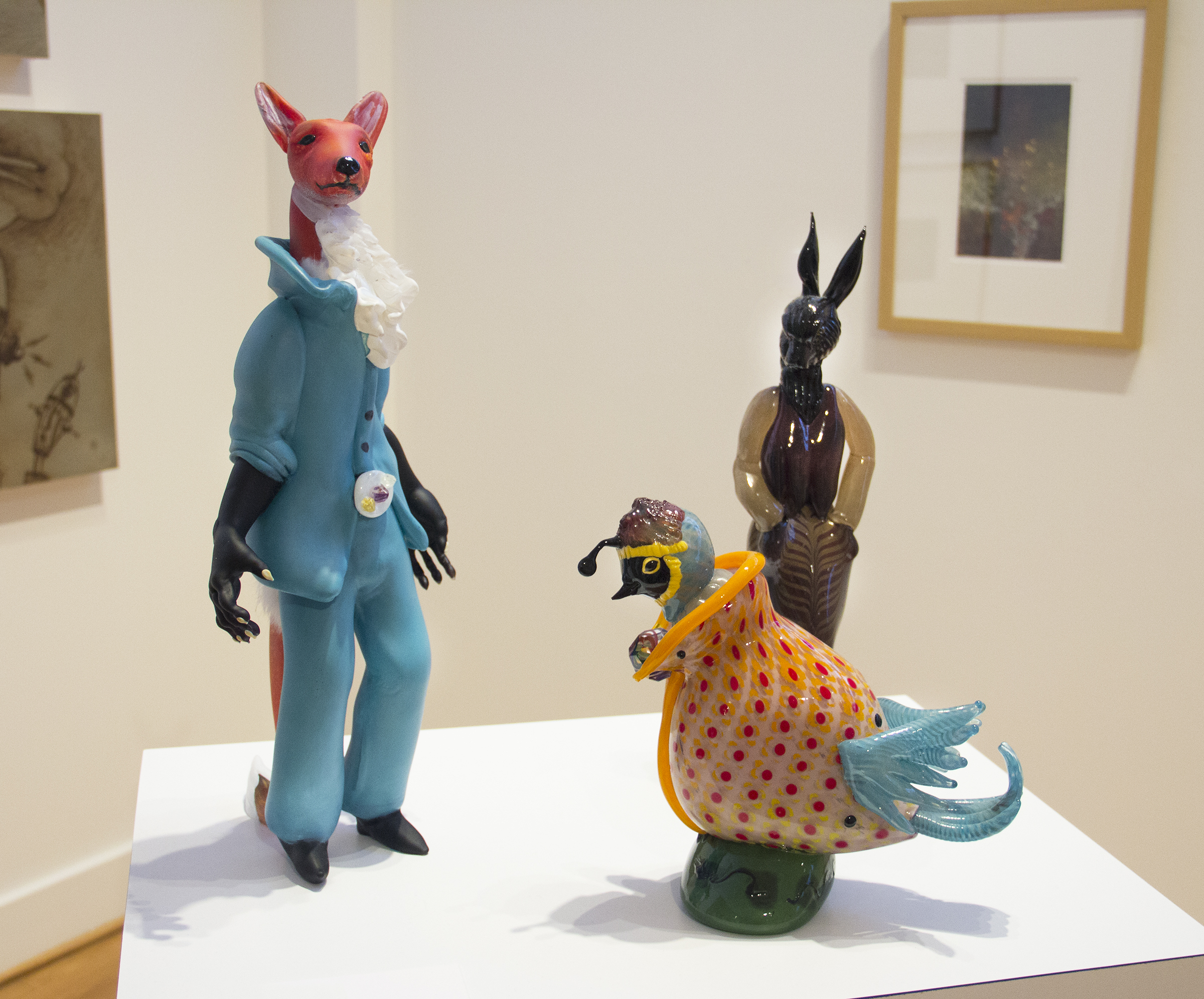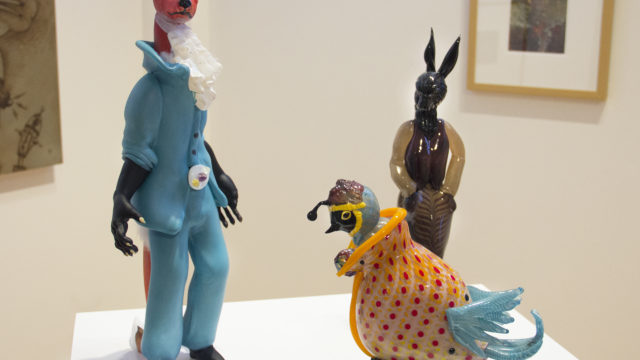By Betsy DiJulio
Exhibitions at the TCC VAC are always a pleasant viewing experience. Shelley Brooks knows how to edit and install beautiful shows in that attractive facility. And the faculty members and administrators—past and present—are practicing, accomplished artists.
Included is the work of both adjunct and full-time faculty, former full-time faculty, and prior VAC directors, as well as the current interim director. And that all adds up to a range of media and approaches—drawings, paintings, photography, digital work, ceramic, glass, wood, and more—all of respectable, even admirable, quality.
Chad Alan Clark’s organic pod forms, like “Gyre Frumentum,” are elegantly crafted from mahogany, copper, and brass with a pattern evoking roots or branches spreading across their gleaming surfaces. Diannne Hottenstein’s, “Protection: Non-Typicals?” a horned animal-headed stoneware vessel, is beautifully formed with rich, contrasting surfaces. And Anne Iott’s photos have a quietly pregnant Zen-like presence…and absence.
In quite a surprising departure from her intriguing figurative work, Corinne Lilyard-Michelle’s small non-objective works in cold wax on paper seem like lovely studies, explorations, or experimentations with organic motifs as well as letter and number stencils—quite a familiar, if appealing, approach to layered mixed-media composition—perhaps an approach to prepared grounds for future work? Craig Nilsen continues to evolve his highly-recognizable vocabulary of forms and figures in striking work that humorously and whimsically ponders some of life’s big questions. And Julia and Robin Rogers’ blown glass animal personifications, “Diego, Quincy and Sassy,” sport gestures, attitude, and body coverings that are indeed sassy and appealing in their color palette of browns, blacks, dusky turquoise, and golden-orange.
However, all of that said, the show by and large lacks work that is particularly daring, ground-breaking, risky, or dramatically inventive by today’s contemporary art world standards. It feels somewhat safe. So, while it is relevant as “art to live with”—and, in fact, I live happily with pieces by Iott and Mayo—and is, hopefully, commercially viable for the artists—it is, overall, not necessarily the kind of art that one thinks about long after, mentally probing and pondering and longing to see more.
Plus, in some cases in which the artists did add a new layer to their work—beads here, dried vines there, color instead of black-and-white—the result seems unnecessarily excessive or even distracting. Perhaps, though, these additions point the way to a promising new direction. And, finally, because the community of artists in our area is somewhat small, a few of the artists have to contend with overexposure. While the old adage “familiarity breeds contempt” doesn’t quite apply, as there is no contempt here, some of the work reads as overly familiar.
However, none of the above applies to a drawing by Julie Williams whose work is very infrequently seen in this area. “Study of Banana Leaves” is a large, colored pencil drawing in sepia tones. Or, perhaps it is more accurate to say that the study is small, but the negative space is vast. And it creates a gripping tension juxtaposed with the ephemeral and delicate form, the latter with enough rich value to establish a powerful whisper of a presence as it folds, spirals, and seems to evaporate like smoke. Somewhat of an anomaly, it evokes an old-world presence in a contemporary guise, seeming to belong to a world apart.
I am still thinking about it.
48th Annual TCC Art Faculty Exhibition
Through January 3, 2018
TCC Visual Arts Center
340 High St., Olde Towne Portsmouth
757.822.1888
9 a.m. to 8 p.m. daily





